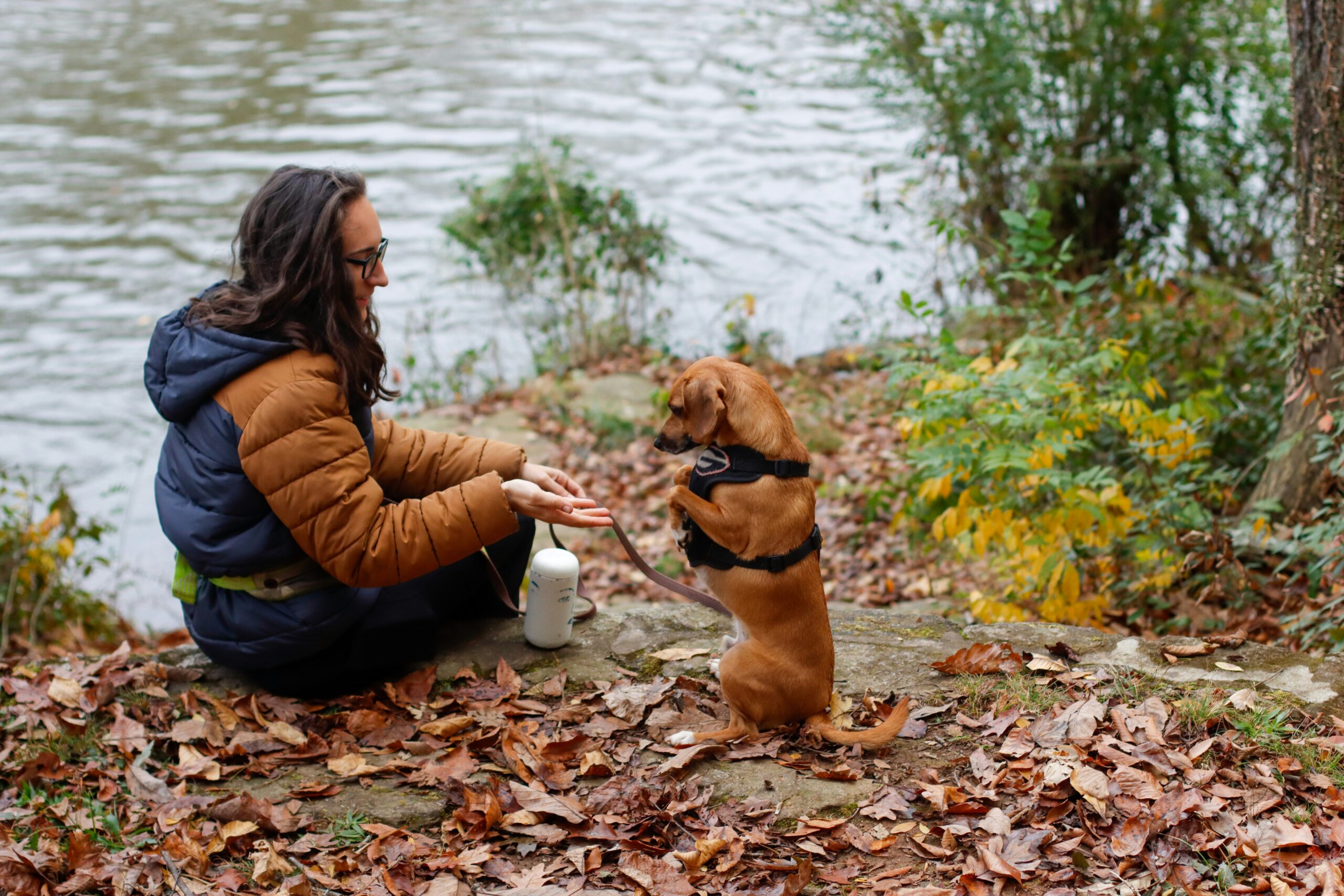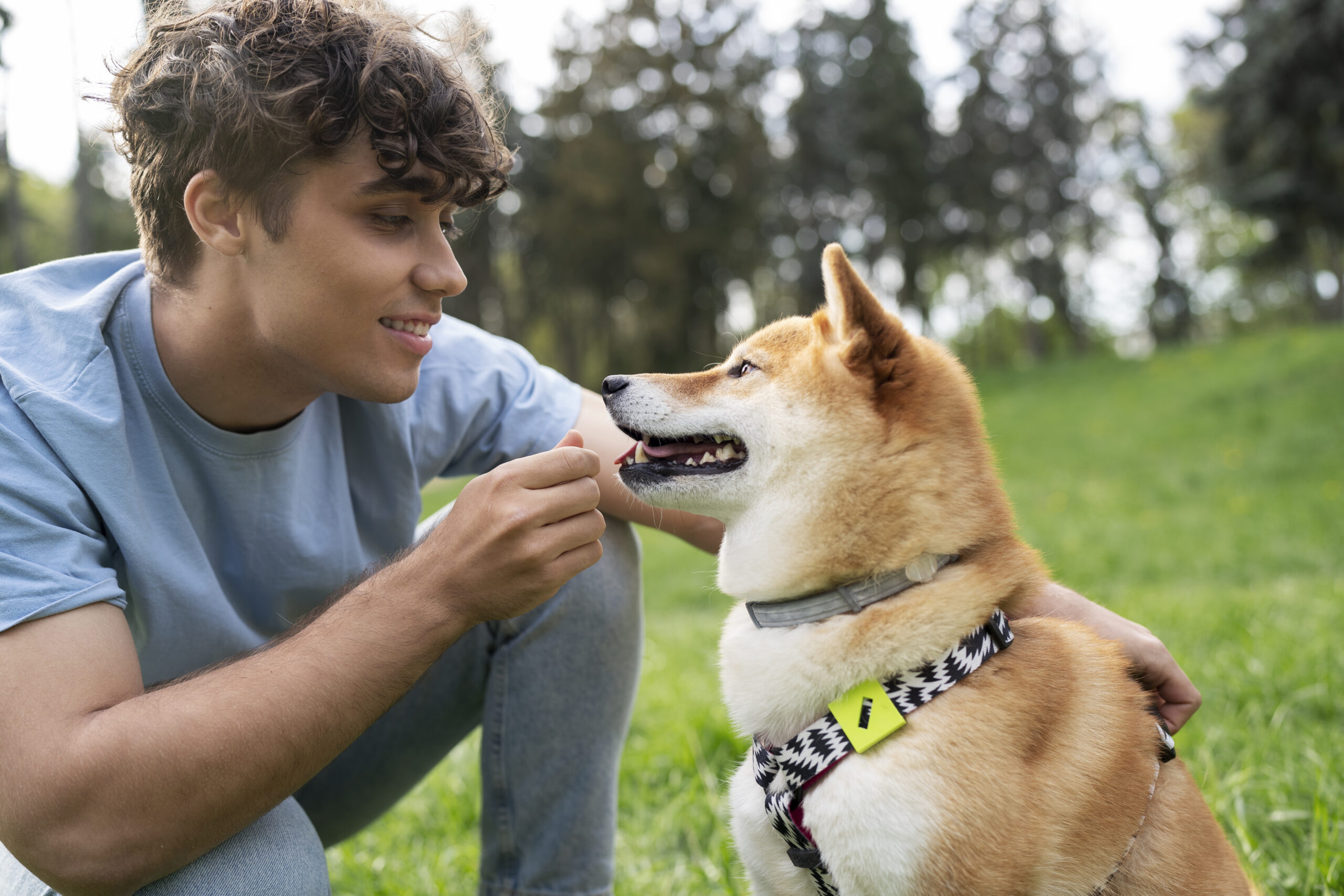Feeling overwhelmed by the chaos of a new puppy? The constant biting, the accidents on the rug, and the struggle to get their attention can be exhausting. You’re not alone, and there’s a science-backed, humane solution that transforms the turmoil into a joyful partnership. This guide moves beyond quick fixes that often fail. Drawing on proven behavioural science and hands-on experience, we’ve developed a comprehensive 30-day plan. It’s designed to not only solve your most urgent puppy problems but also help you start building a bond with your dog based on trust and mutual respect.
This is more than a list of commands; it’s a complete roadmap. By the end of this article, you will have a clear, day-by-day structured dog training plan that uses positive reinforcement dog training to empower you to train your puppy effectively, confidently, and humanely. Prepare to build a better relationship with your new best friend.
Table of Contents
- The “Why” Behind the “How”: Core Principles of Positive Reinforcement
- The First 30 Days: A Structured Dog Training Plan
- Case Study: Training a Rescue Dog with Positive Reinforcement
- Tools & Resources For Success
- Conclusion
- FAQ
The “Why” Behind the “How”: Core Principles of Positive Reinforcement
Before diving into the practical steps, it’s crucial to understand the science that makes this method so effective. This isn’t about treats and tricks; it’s about communication, motivation, and building a relationship founded on mutual understanding. By grasping these core principles, you’ll become a more intuitive and successful trainer.

What is Positive Reinforcement Dog Training?
At its heart, positive reinforcement dog training is a method based on operant conditioning. In simple terms, it means adding something the dog values (a treat, praise, a toy) immediately after they perform a desired behaviour. This reward makes the behaviour more likely to be repeated in the future. According to the Kentucky Humane Society, this is the core of the principle of positive reinforcement training.
Think of it like this: when your puppy sits, you give them a treat. Their brain makes a connection: “Sitting gets me good things!” Over time, they will offer to sit more frequently. This approach stands in stark contrast to punishment-based methods, which focus on correcting unwanted behaviours, often through fear or intimidation. Instead of punishing the “wrong” choice, positive reinforcement focuses on teaching and rewarding the “right” one, making learning a positive experience for your dog. It’s the foundation for all effective dog obedience training commands.
Why It Works: Building a Bond Based on Trust, Not Fear
The true power of positive reinforcement lies in its psychological benefits. When you train with rewards, you are not just shaping behaviour; you are building a bond with your dog that is rooted in trust. Your puppy learns that you are the source of good things and that engaging with you is fun and rewarding. This fosters a cooperative spirit rather than compliance born from fear.
This philosophy, championed by experts like Dr. Ian Dunbar in his seminal guide “Before You Get Your Puppy,” emphasises that training should be an enjoyable game. A dog trained this way is more likely to be confident, eager to learn, and willing to problem-solve. They learn how to think and offer behaviours, rather than simply avoiding punishment. This creates a resilient, happy companion who trusts you and enjoys the training process as much as you do. You can learn more about our training philosophy on our About Us page.
The First 30 Days: A Structured Dog Training Plan
This is the core of your journey: a day-by-day framework to guide you and your puppy through the most critical first month. This integrated structured dog training plan combines foundational skills with solutions to the most common puppy problems. To make it even easier, be sure to download our exclusive ‘Puppy’s First 30 Days’ checklist to track your progress.
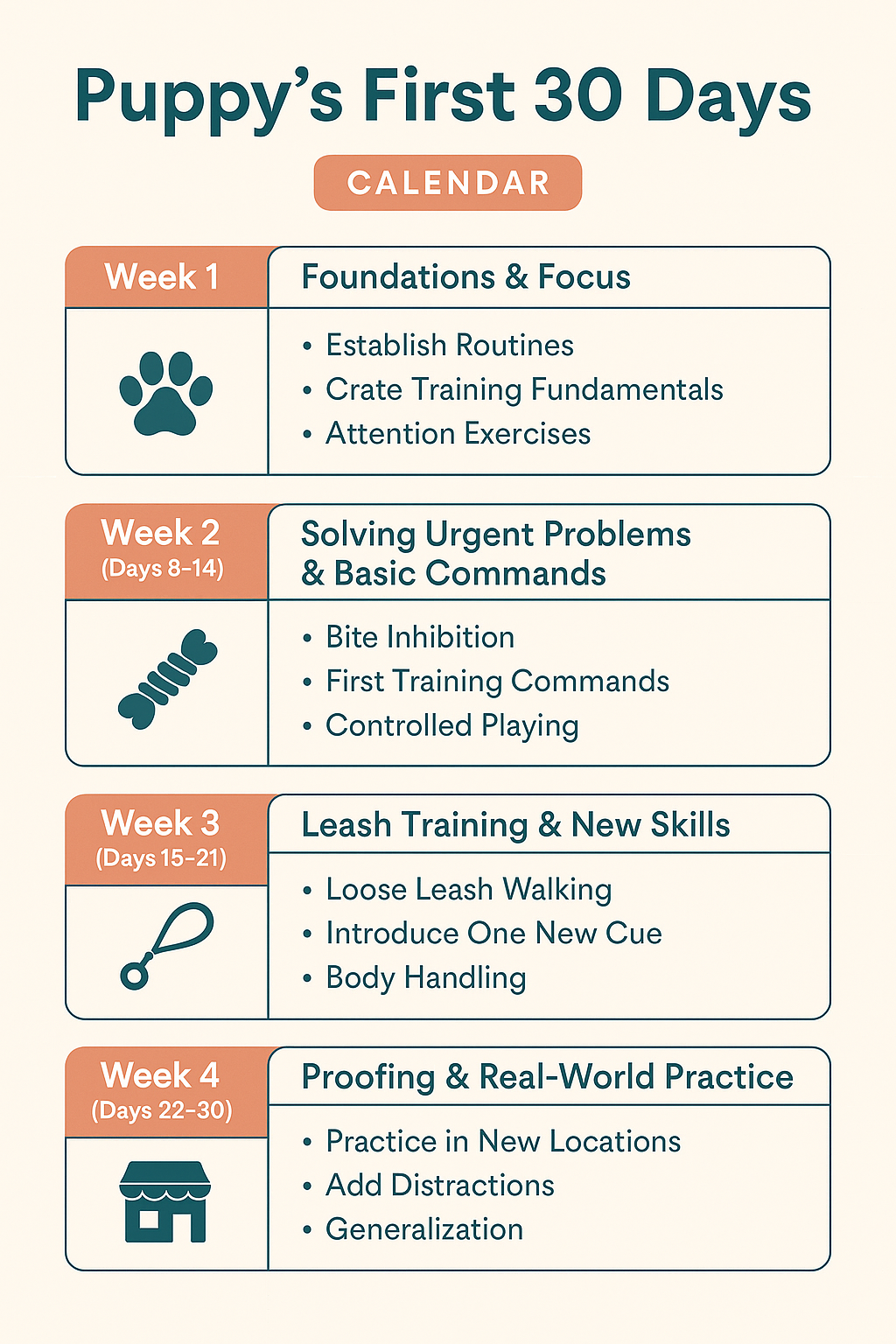
Week 1 (Days 1-7): Foundations & Focus
The first week is all about creating predictability and safety. Your puppy’s world has just been turned upside down; your job is to establish a routine that helps them feel secure.
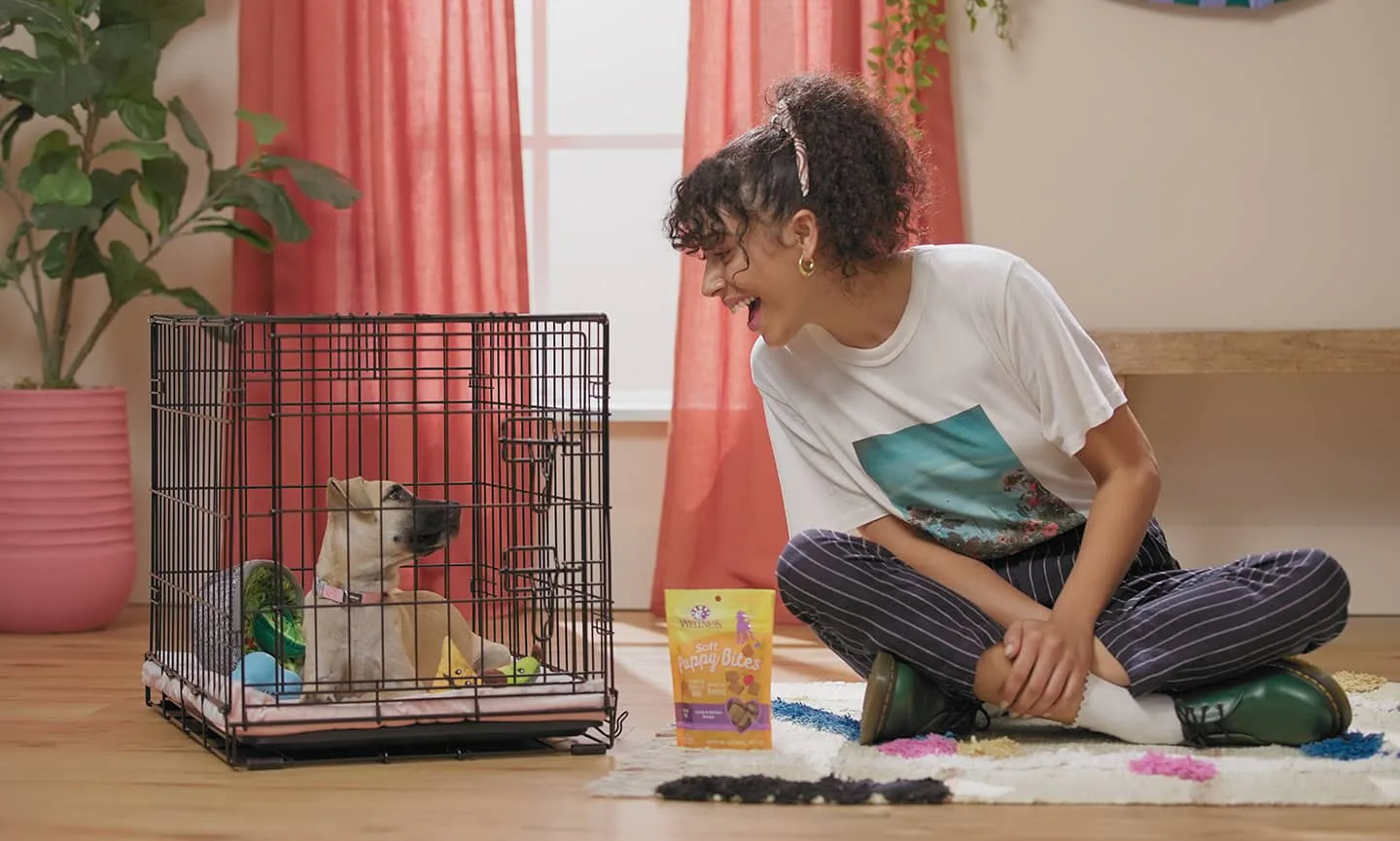
- Establish Routines: Set consistent times for feeding, potty breaks (every 1-2 hours, plus after waking, playing, and eating), and bedtime. A predictable schedule is the first step in successful house training.
- Crate Training Fundamentals: Introduce the crate as a safe, wonderful den—never as a punishment. Make it comfortable, feed meals in it, and toss high-value treats inside for your puppy to discover. Keep initial sessions short and positive. If you need more guidance, check out our guide on how to crate train a puppy in detail. The goal for this week is for your puppy to enter the crate willingly.
- Attention Exercises: Start building focus. Say your puppy’s name in a happy tone. The moment they look at you, mark the behaviour with a “Yes!” or a clicker, and give them a treat. This teaches them that paying attention to you is highly rewarding. This is the first step in learning how to keep a dog’s attention during training.
Week 2 (Days 8-14): Solving Urgent Problems & Basic Commands
With a basic routine established, you can now tackle urgent behaviours and introduce the first dog obedience training commands.
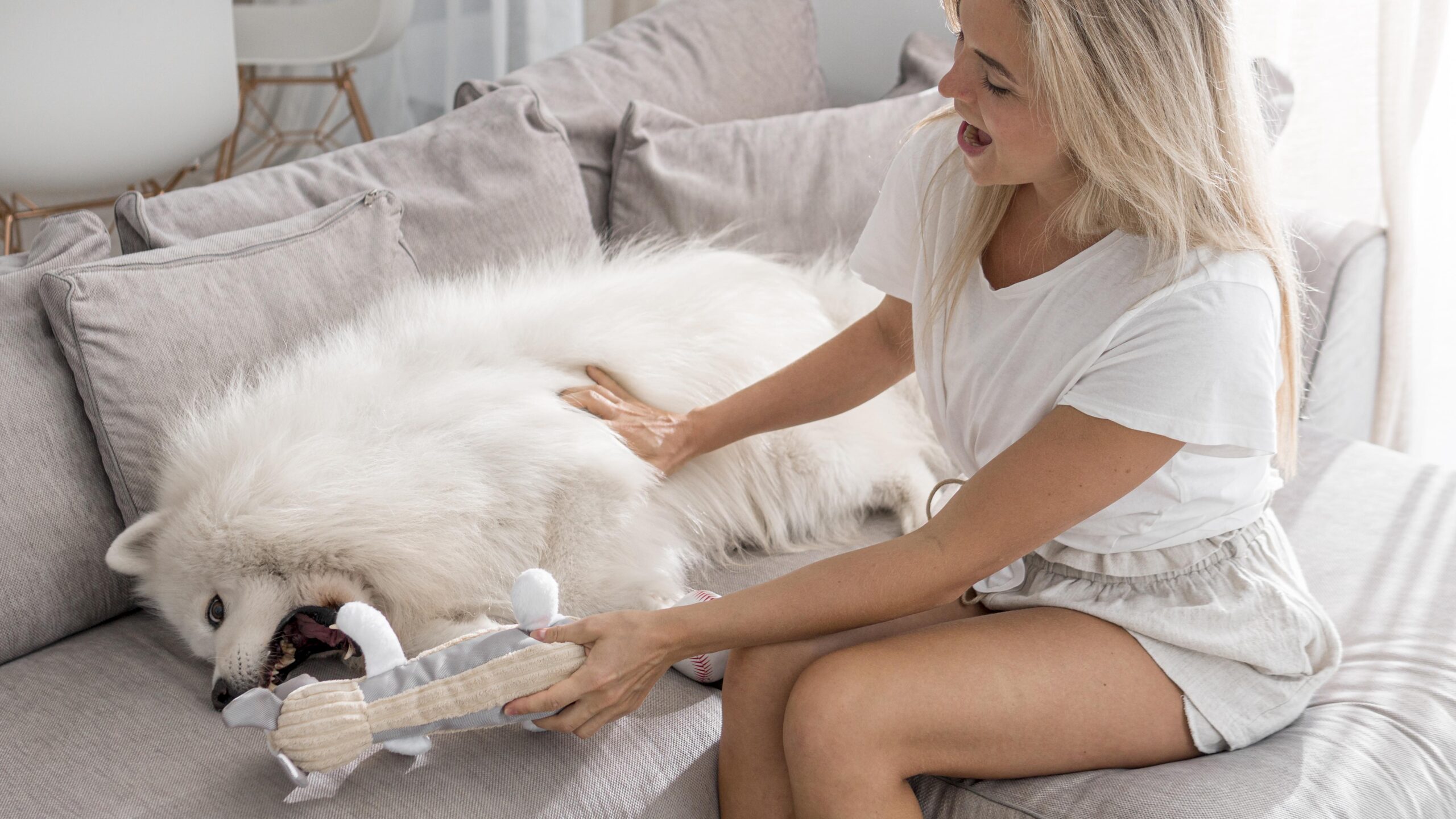
- Bite Inhibition: Puppies explore with their mouths. If you’re wondering how to stop puppy biting fast, the answer is redirection. When your puppy nips you, yelp “Ouch!” in a high-pitched voice, briefly withdraw your hand, and immediately offer an appropriate chew toy. Praise them enthusiastically when they chew the toy instead. This teaches them what is and isn’t okay to bite. For a persistent problem, having a variety of durable puppy chew toys on hand is essential.
- Introduce ‘Sit’: Lure your puppy into a sit by holding a treat over their head and moving it slightly backwards. As their head goes up, their rear will go down. The moment they sit, mark it (“Yes!”) and reward them. Keep sessions short and fun.
- Introduce ‘Come’: Make it the best word your puppy has ever heard. Use an excited tone and reward them with praise and a fantastic treat when they come to you. Start in a quiet room with no distractions.
As noted by the experts at Dogs Trust UK, consistency and positive redirection are key to helping solve common puppy problems during this stage.
Week 3 (Days 15-21): Expanding Skills & Leash Manners
This week is about introducing your puppy to new experiences and building on the commands you’ve already started.
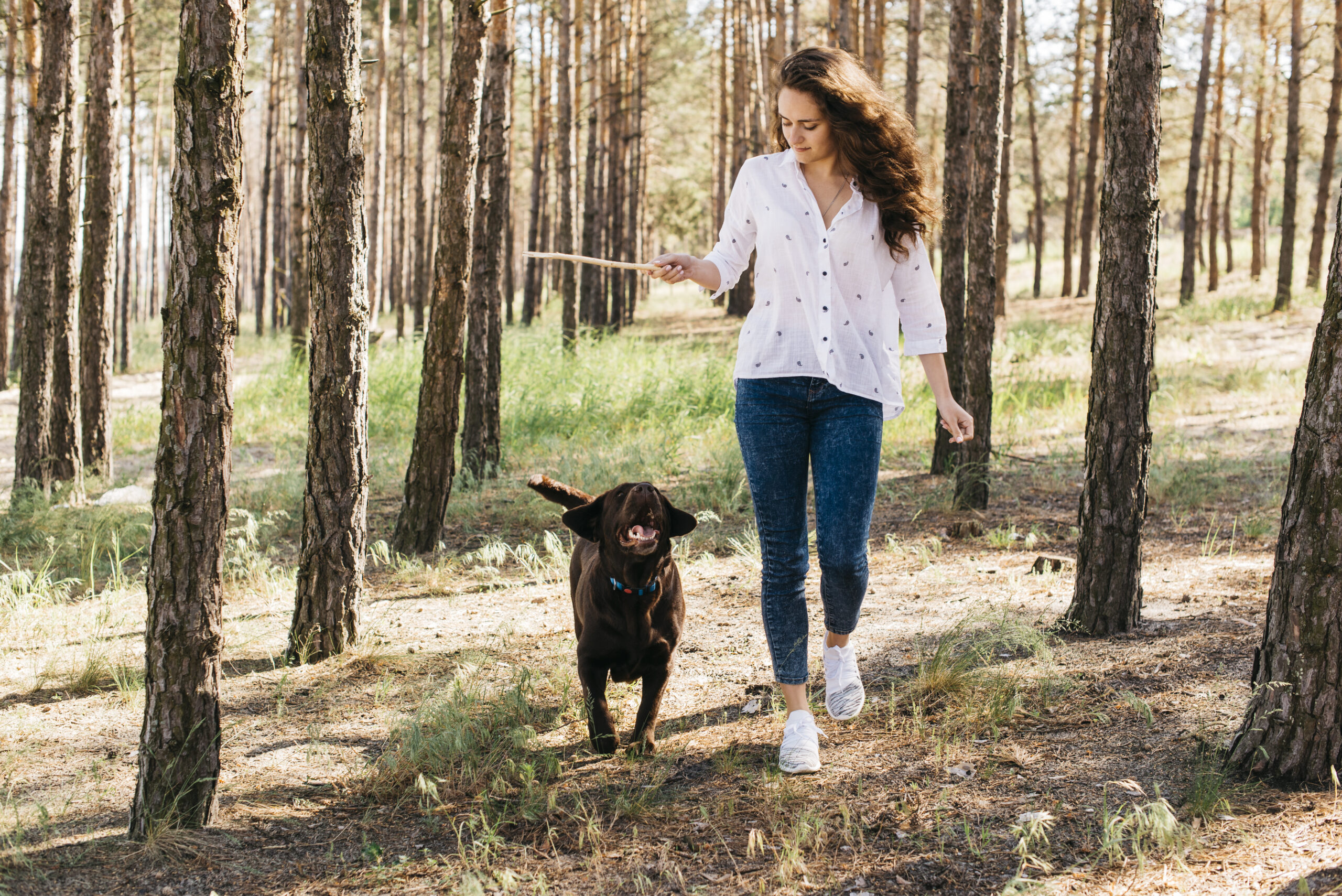
Begin leash manners by rewarding attention and calm steps.
- Leash & Collar Introduction: Start by letting your puppy wear a lightweight collar or harness for short periods around the house, associating it with treats and praise. Once they are comfortable, attach a light leash and let them drag it around (under supervision) to get used to the feeling.
- First Walks: Keep initial walks short, focusing on positive experiences rather than distance. Let your puppy sniff and explore. Reward them every time they check in with you or walk on a loose leash. If you find your dog not listening on walks, it’s often because the environment is too distracting. Practice in a low-distraction area first.
- Introduce ‘Down’ and ‘Stay’: From a ‘Sit’, lure your puppy into a ‘Down’ by moving a treat from their nose to the floor between their paws. For ‘Stay’, start with a very short duration (1-2 seconds) before releasing them with a cheerful “Okay!” and a reward.
Week 4 (Days 22-30): Proofing & Real-World Application
The final week is about making the training stick. ‘Proofing’ means practising behaviours in different locations and with gradually increasing distractions to help your puppy generalise their skills.
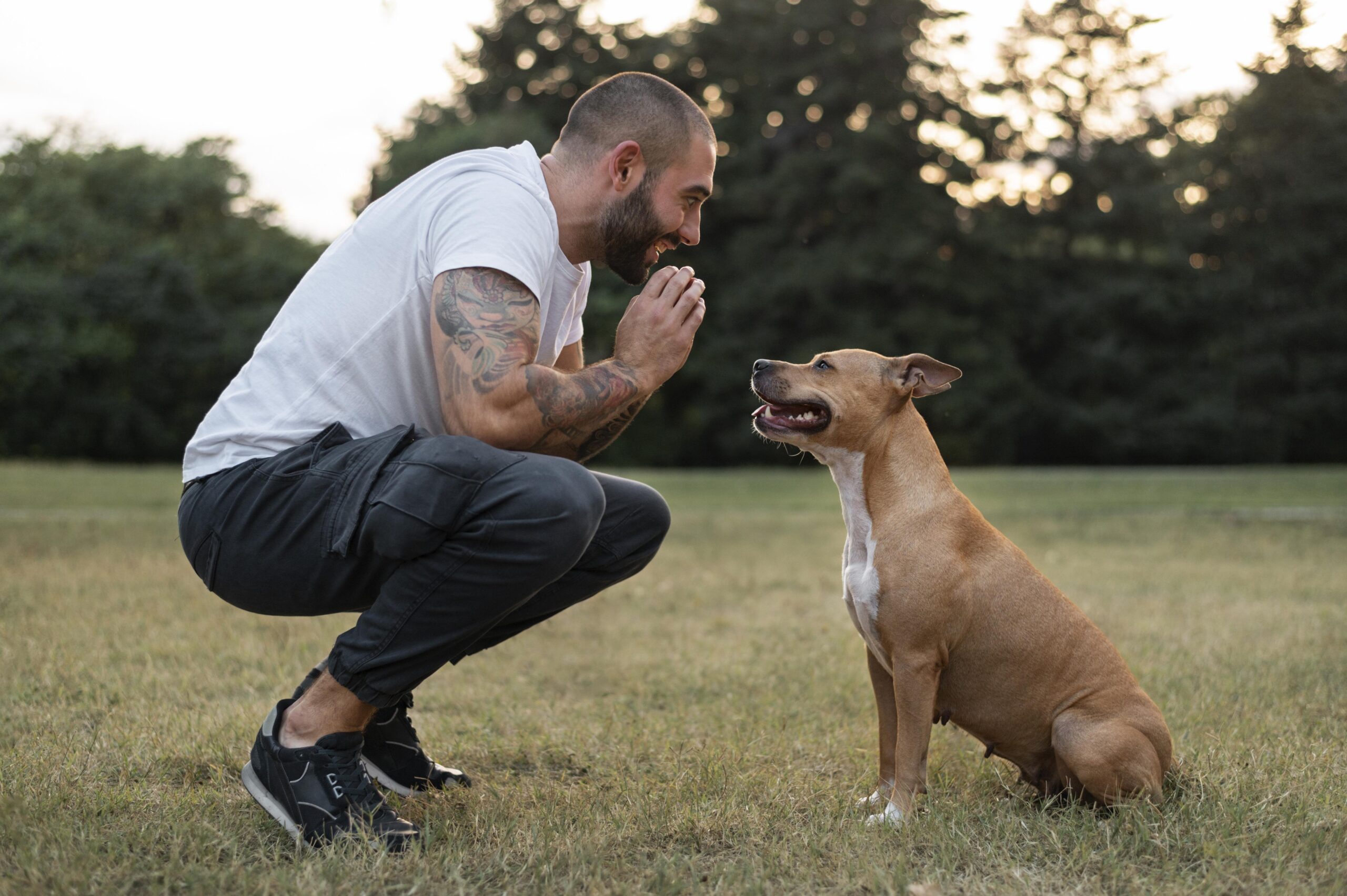
- Proofing Basics: Practice ‘Sit’ and ‘Come’ in the backyard, on the sidewalk, or in a pet-friendly store. Start with low-distraction environments and work your way up. Every new location is a new training challenge, so be patient and use high-value rewards.
- Early Socialisation: Safely expose your puppy to new sights, sounds, and smells. This doesn’t mean uncontrolled play at a dog park. It means controlled, positive experiences like watching traffic from a distance, meeting a calm, vaccinated adult dog, or walking on different surfaces. The goal is to build confidence, not fear.
- Putting It All Together: Combine your commands. Ask for a ‘Sit’ before putting down their food bowl or a ‘Stay’ before opening the door. Integrating training into daily life makes it a natural part of your routine.
Case Study: Training a Rescue Dog with Positive Reinforcement
The principles of this 30-day plan aren’t just for puppies. They are incredibly effective for adult dogs, especially those with a difficult past. This is where positive reinforcement truly shines, replacing fear with confidence.
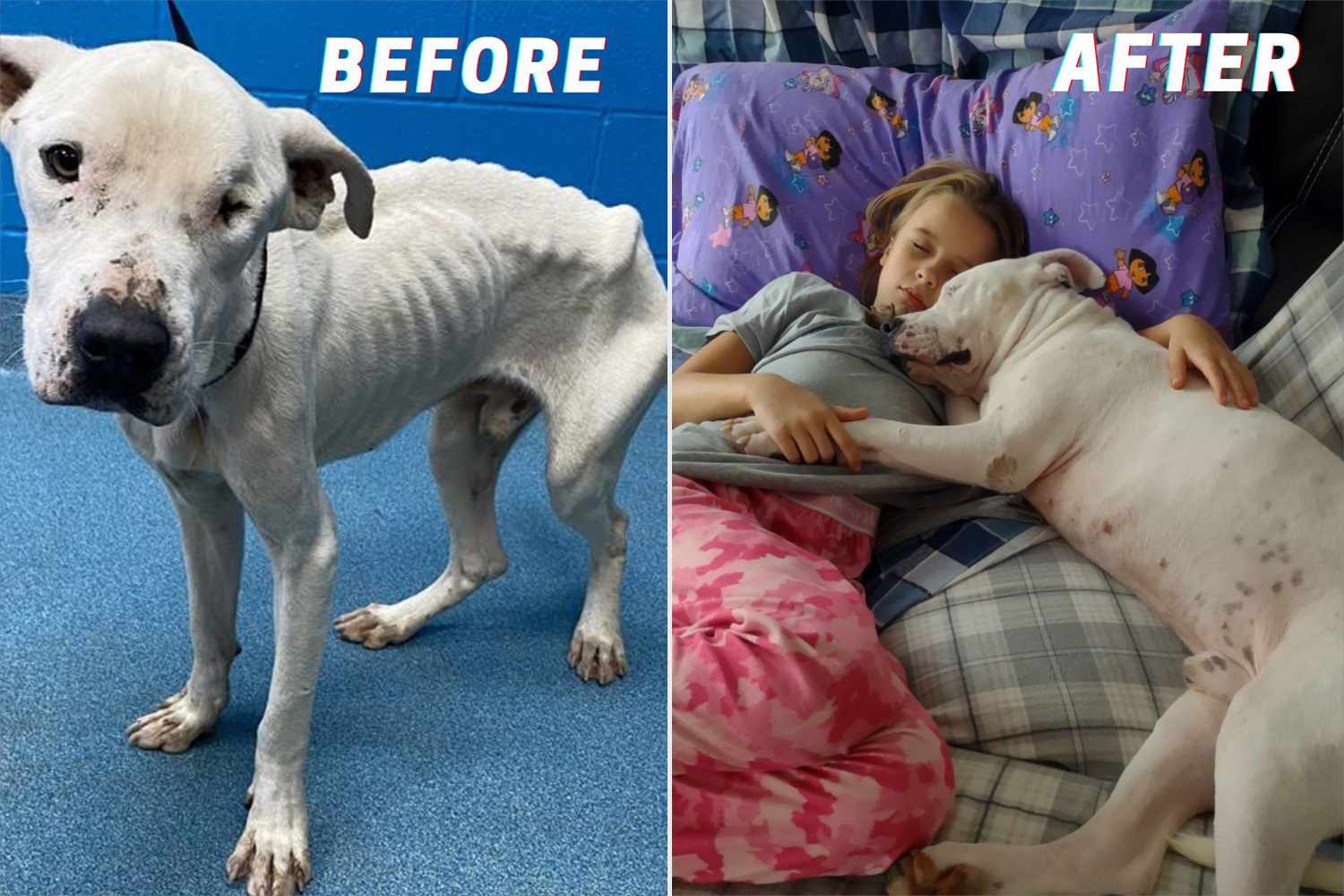
The Challenge: Overcoming Fear and Building Trust
Consider the case of a 2-year-old rescue dog who was fearful of new people and sounds, pulling frantically on the leash, and showing signs of separation anxiety. These weren’t acts of disobedience; they were symptoms of fear. The core challenge wasn’t teaching commands, but figuring out how to train a rescue dog by first building a foundation of trust. The question became how to train a dog with anxiety by showing them they were finally safe.
The Breakthrough: A Patient, Structured Approach
The 30-day framework was adapted for the rescue’s needs. Week 1 was spent simply hand-feeding meals and tossing treats to build a positive association. Crate training focused on creating an unbreachable safe space. Instead of forcing interactions, the dog was allowed to choose when to approach new things, and every brave step was rewarded.
The breakthrough came when training sessions focused on choice. Using ‘Come’ as a fun recall game instead of a demand, the dog learned that coming to their owner was the best choice they could make. By focusing on rewarding calm behaviour and building confidence through predictable routines, the dog’s anxiety lessened. Within a month, the frantic pulling on walks was replaced by a looser leash, and the dog began to look to their owner for guidance instead of reacting in fear. For dogs with severe anxiety or fear-based aggression, it is always best to seek assistance from a qualified professional. For many, a structured plan combined with patience is the key to unlocking their potential. We offer training plans to help with these specific cases.
Tools & Resources For Success
Having the right tools can make your training sessions more efficient and effective. Here are the essentials:
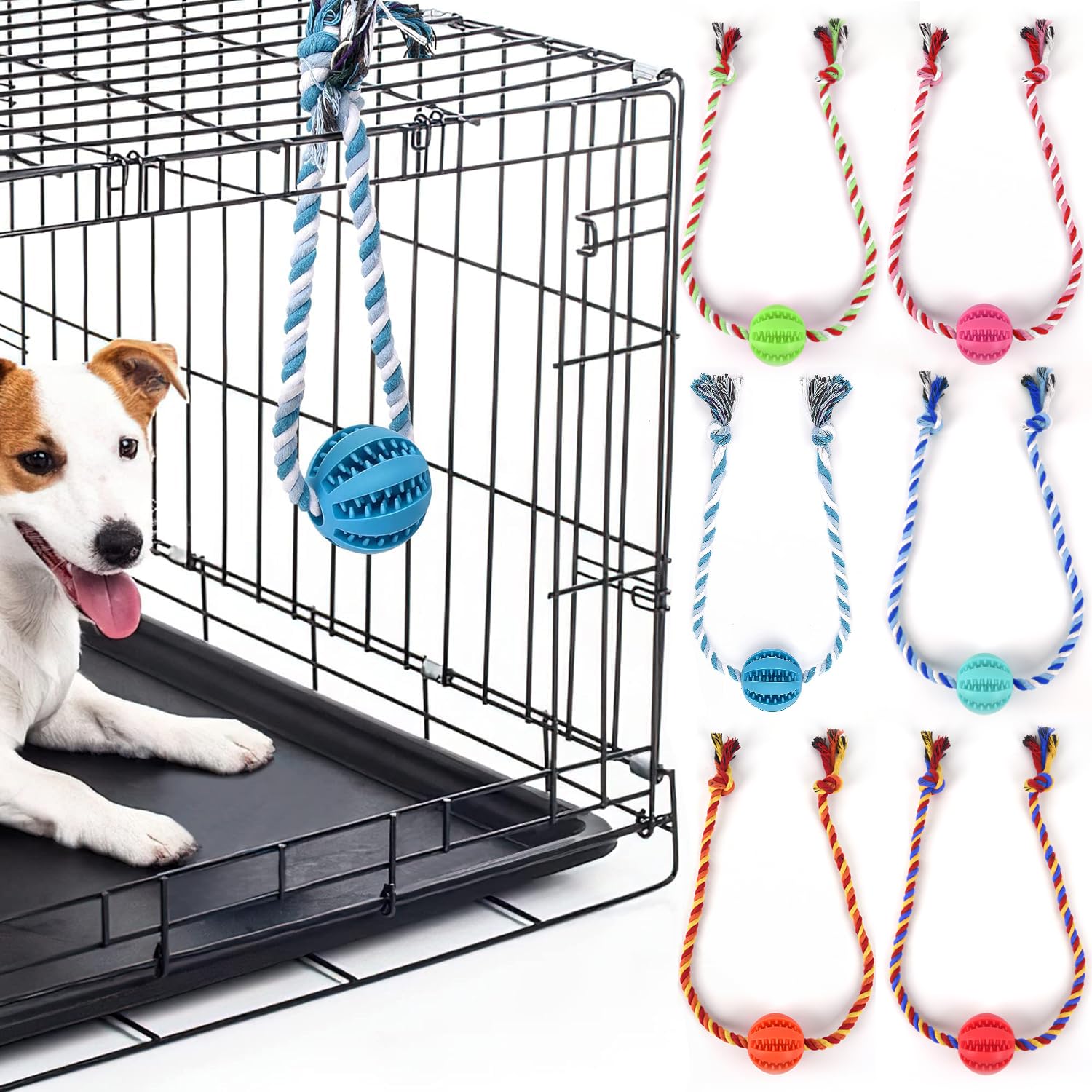
- High-Value Treats: These are special, delicious treats (like small pieces of chicken, cheese, or freeze-dried liver) that are more motivating than regular kibble. Save them for training behaviours or high-distraction environments.
- Clickers & Verbal Markers: A clicker or a consistent verbal marker (like the word “Yes!”) pinpoints the exact moment your dog does something right. This precise communication speeds up learning.
- A Comfortable Crate: The crate should be large enough for your dog to stand up and turn around in comfortably. It’s a management tool for potty training and a safe den for your dog.
- Appropriate Chew Toys: Durable rubber toys, puzzle toys, and long-lasting chews are essential for redirecting puppy biting and keeping your dog mentally stimulated.
Conclusion
The first 30 days with your new puppy set the stage for your entire life together. While it can feel chaotic, a structured dog training plan rooted in positive reinforcement dog training is the most reliable path to success. This method goes beyond correcting bad habits; it teaches your puppy how to make good choices, solves urgent problems humanely, and, most importantly, focuses on building a bond with your dog based on communication, trust, and joy.
You now have a complete roadmap that combines proven behavioural science with a practical, day-by-day plan. You have the tools and the knowledge to raise a confident, well-behaved companion. The journey from a chaotic puppy to a cherished family member is one of the most rewarding experiences you can have.
Ready to start your journey? Download our exclusive ‘Puppy’s First 30 Days’ training checklist now and build a better relationship with your new best friend.
FAQ
What if my dog isn’t motivated by treats?
While most dogs are food-motivated, rewards can be anything your dog truly values. Try using a favourite toy for a quick game of tug, offering enthusiastic praise and petting, or using “life rewards.” A life reward is giving your dog access to something they want, like asking for a ‘Sit’ before you open the door to the backyard.
How long should our training sessions be?
For puppies, keep training sessions very short—just 3 to 5 minutes at a time, several times a day. A puppy’s attention span is short, and ending on a positive note before they get bored or frustrated is key. This is the best way to keep a dog’s attention during training and ensure they always see training as a fun game.
Can I use positive reinforcement to train an older dog or rescue?
Absolutely. The principles of positive reinforcement work for dogs of all ages and backgrounds. When considering how to train a rescue dog, the approach is the same, but you may need extra patience. You are not only teaching new behaviours but also potentially overcoming a history of fear, neglect, or different training methods. The focus on building trust is even more critical.



